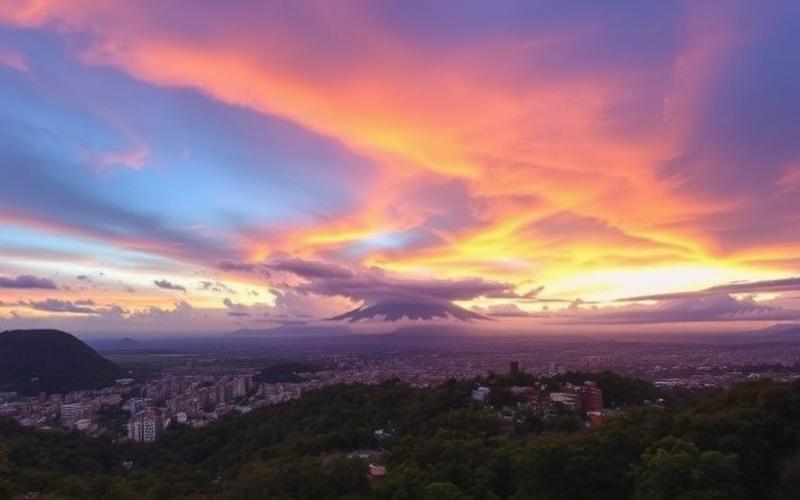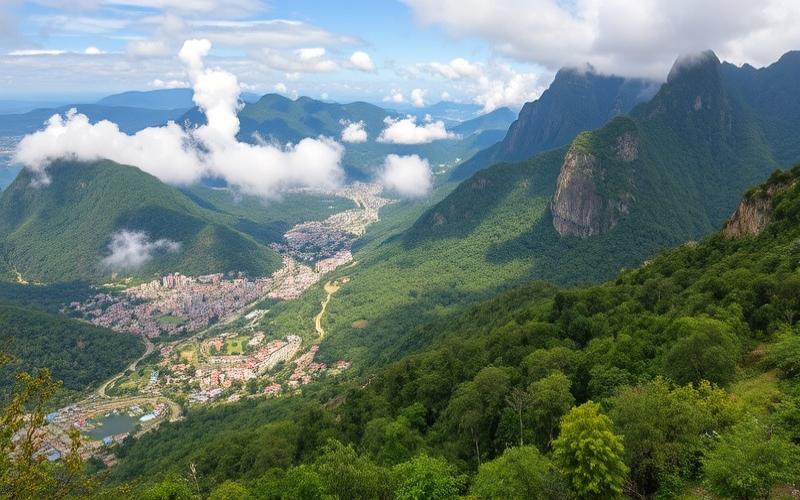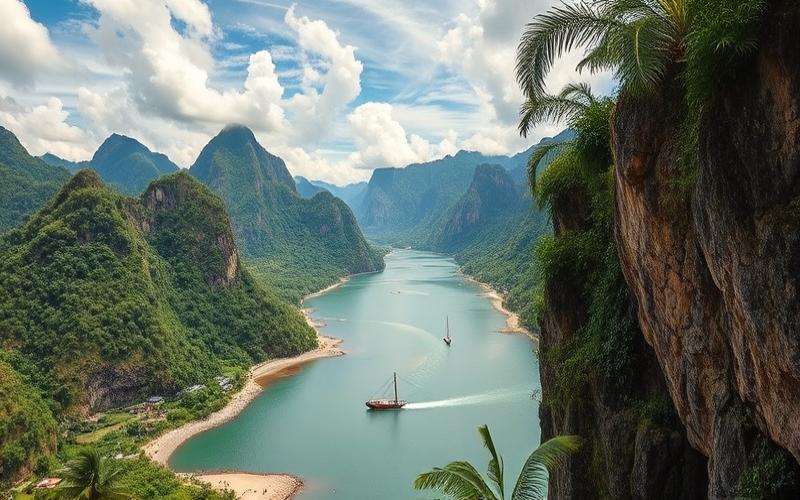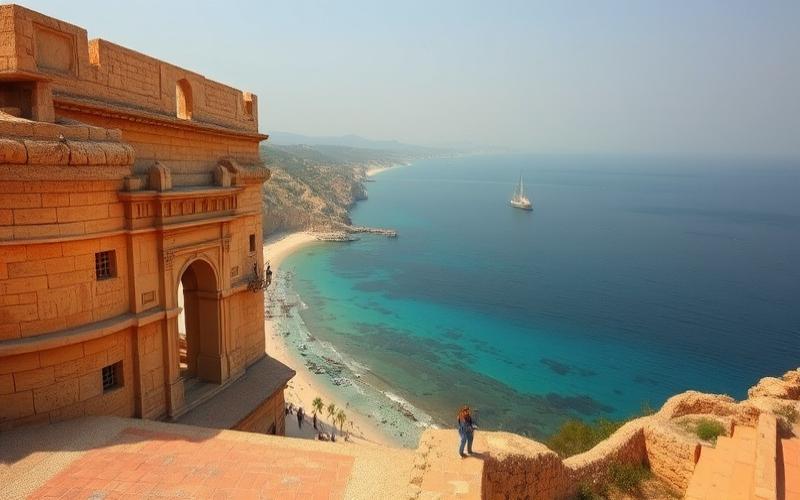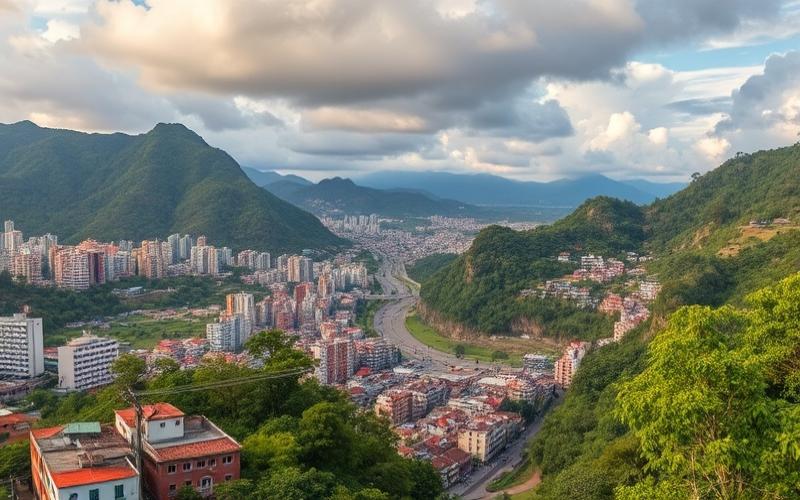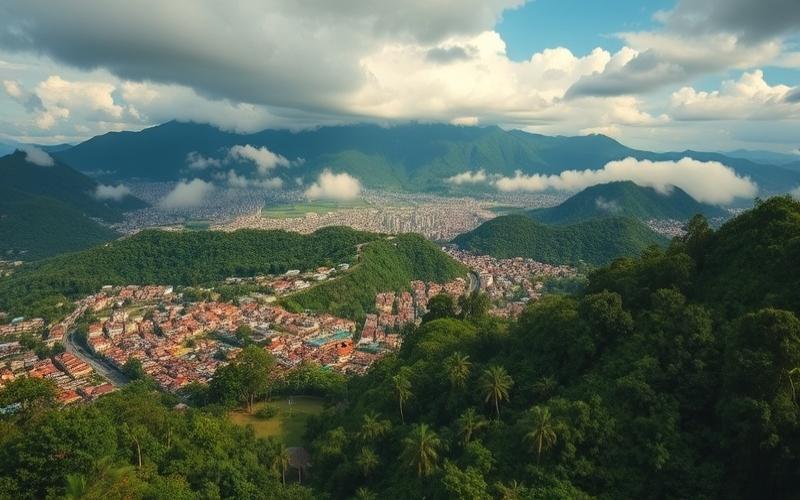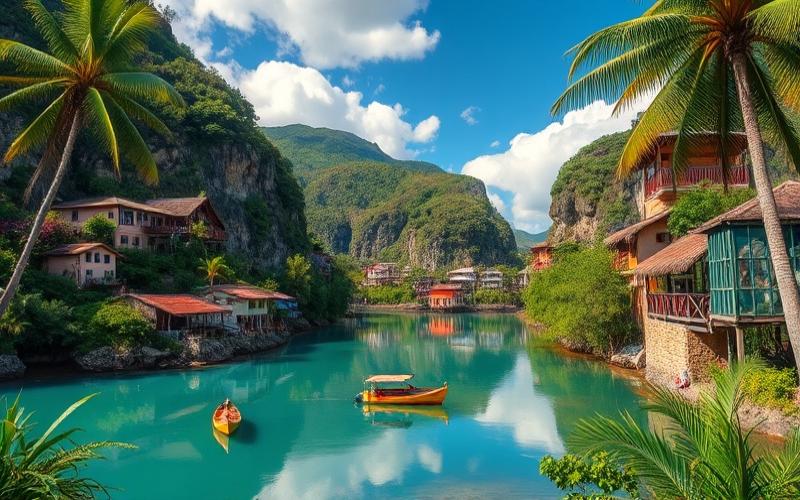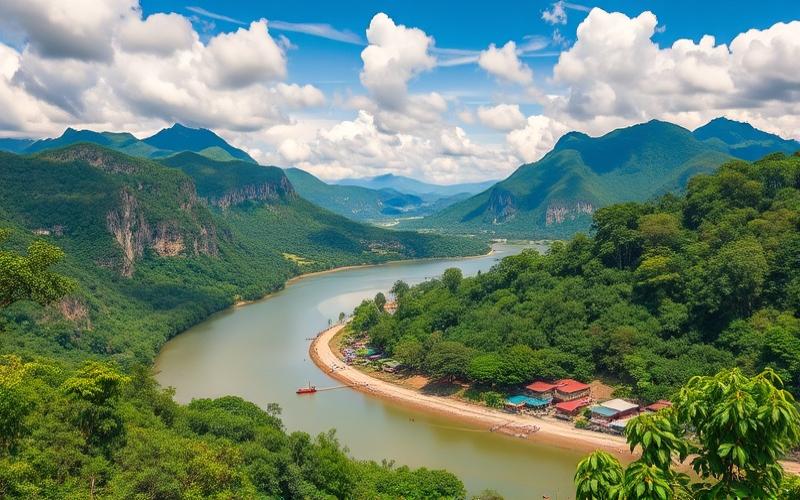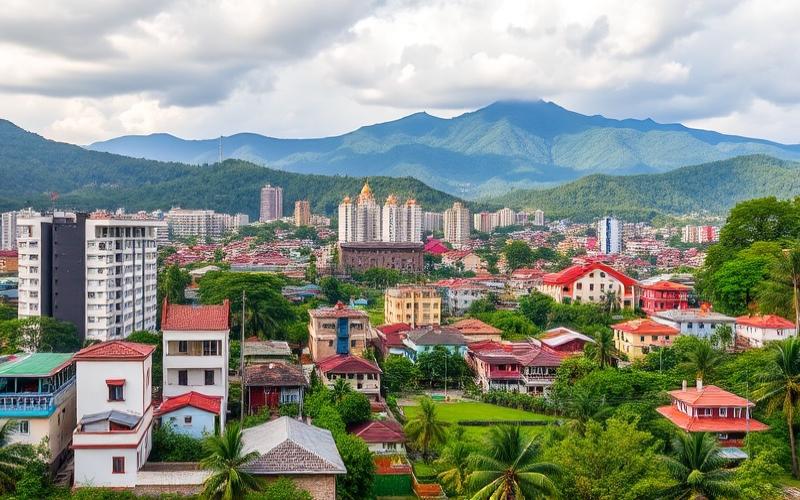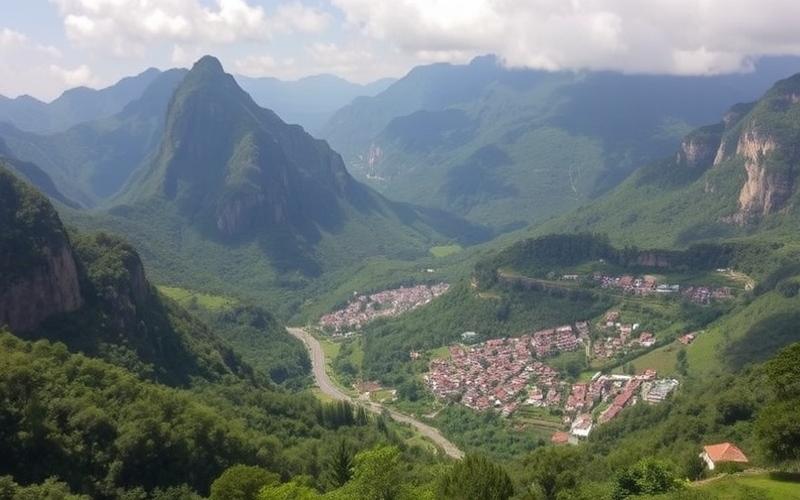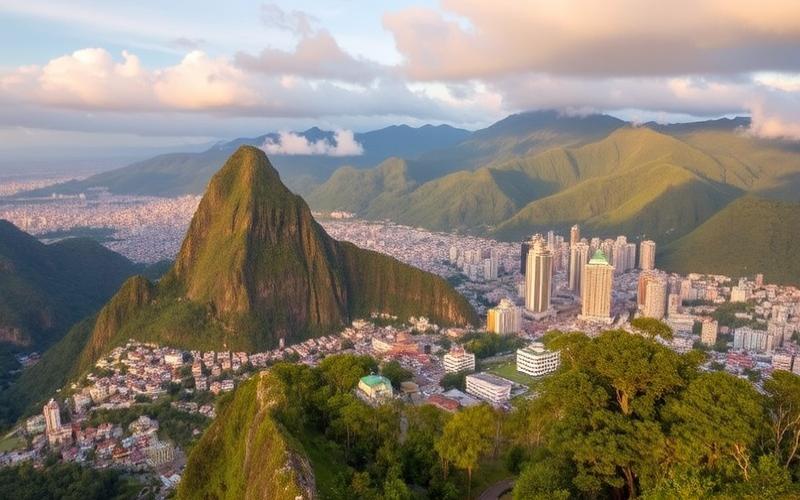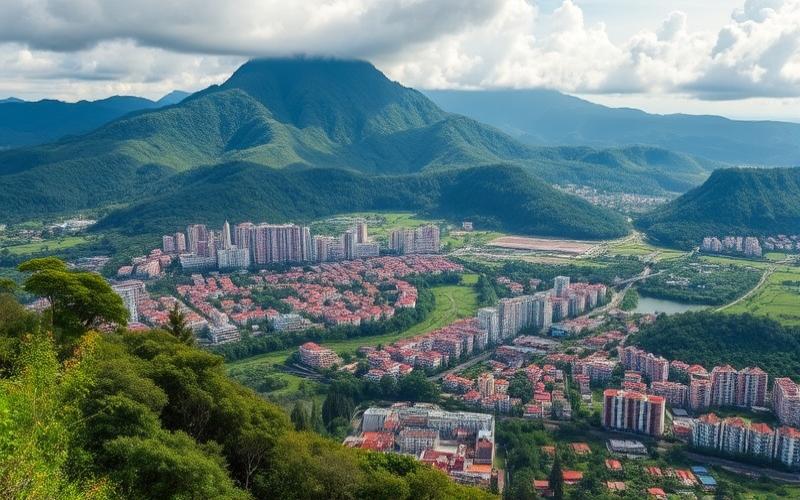
 Published on and written by Cyril Jarnias
Published on and written by Cyril Jarnias
Situated at the northern tip of South America, Colombia is a country of remarkable geographical richness, where the majestic Andes stretch for over 1,500 km, offering breathtaking landscapes and exceptional ecological diversity.
Bordered by the Caribbean Sea to the west and the Pacific Ocean to the east, it boasts a coastline dotted with paradise beaches and unique marine ecosystems.
The Colombian Amazon, a true green lung, is home to incredibly diverse wildlife and flora, while the vast savannas and tropical forests host some of the planet’s most fascinating species.
This mosaic of climatic regions and diverse ecosystems makes Colombia an essential destination for nature and adventure lovers, promising rewarding discoveries at every turn.
General Geography of Colombia
Colombia occupies the northwest of South America, connecting with Central America through Panama. It is the only South American country with coastlines on two oceans, featuring 1,600 km of coastline on the Caribbean Sea to the north and 1,300 km on the Pacific Ocean to the west. It shares land borders with Venezuela, Brazil, Peru, Ecuador, and Panama.
Topography and Main Formations:
- The Andes mountain range crosses the country and divides into three branches: the Western Cordillera (near the Pacific), the Central Cordillera (the highest), and the Eastern Cordillera (more extensive and less elevated).
- The Sierra Nevada de Santa Marta, an isolated coastal range, hosts the country’s highest peak (Pico Cristóbal Colón, 5,776 m).
- The vast plains of the Llanos extend to the east, towards the Orinoco Basin.
- The Bogotá Plateau, located at over 2,600 m above sea level, is home to the capital.
- The Amazon region occupies the southeastern territory, characterized by extensive forests and reliefs like the Sierra de la Macarena.
Climate Zones:
- Tropical climate on the coasts and lowlands.
- Temperate and cold climate in the high Andean altitudes (featuring páramos and eternal snows).
- Equatorial and humid climate in the Amazon and Pacific coast, with heavy rainfall.
- Semi-arid climate in the Guajira Desert in the north.
Main Rivers and Lakes:
- Río Magdalena: main river crossing the country from south to north, essential for transport and economy.
- Río Cauca: tributary of the Magdalena, crosses the central valley.
- Río Atrato: important river on the Pacific coast.
- Río Putumayo and Río Caquetá: major waterways in the Amazon region.
- Lago de Tota: largest natural lake in Colombia, located in the Andes.
Distinct Geographical Regions:
| Region | Main Characteristics |
|---|---|
| Andean Region | Three cordilleras, high plateaus, canyons, valleys |
| Amazon Region | Tropical forests, biodiversity, powerful rivers |
| Caribbean Coast | Beaches, deserts (Guajira), wetlands, Sierra Nevada |
| Pacific Coast | Mountainous terrain, heavy rainfall, mangroves |
| Eastern Llanos | Vast plains, savannas, large rivers |
Representative Ecosystems:
- Amazon tropical forests
- Mangroves and estuaries (Pacific coast)
- Guajira Desert
- Andean páramos (high-altitude wetlands)
- Llanos savanna
- Beaches, wetlands, lagoons, and coastal jungles
Impact of Geographical Diversity:
The variety of climates and terrains has fostered the development of diverse agricultural crops: coffee, tropical fruits, flowers, sugarcane, and livestock in the Llanos.
Regional differences are reflected in gastronomy, music, and cultural traditions: for example, vallenato on the Caribbean coast, salsa in the Andean region.
This natural diversity contributes to tourism (Andean hiking, beaches, wildlife observation) and ecological richness, making Colombia one of the most biodiverse countries in the world.
Key Takeaways:
Colombia, through its position, terrain, and mosaic of climates, presents a multitude of landscapes and ecosystems, which strongly influence the country’s culture and economy.
Good to Know:
Colombia, located at the northwestern tip of South America, boasts impressive geographical diversity, ranging from the Andes to the Amazon, which strongly influences its varied microclimates, agricultural practices, and natural resources. Its main rivers like the Magdalena and Cauca support the local economy, while diverse ecosystems, from tropical forests to páramos, enrich biodiversity and inspire Colombian culture.
Main Regions of Colombia
Colombia is divided into five main geographical regions, each characterized by its own topography, climate, biodiversity, natural boundaries, and cultural diversity.
| Region | Topography | Climate | Ecosystem | Main Cities / Attractions | Boundaries | Cultural Diversity / Economic Role / Traditions |
|---|---|---|---|---|---|---|
| Andean | Three cordilleras (Western, Central, Eastern), inter-Andean valleys, high plateaus | Variable: tropical, temperate, cold depending on altitude | Mountain forests, páramos, fertile valleys | Bogotá, Medellín, Cali, Villa de Leyva, Popayán | Bounded by the Magdalena and Cauca valleys | Majority of the population, ethnic diversity, industrial and agricultural heart (coffee, flowers), traditions like the Feria de las Flores and major historical events (independence, civil wars) |
| Caribbean | Coastal plains, wetlands, depressions, Sierra Nevada de Santa Marta massif (world’s highest coastal mountain), La Guajira Desert | Tropical, dry (Guajira), humid elsewhere | Mangroves, beaches, ciénagas, dry forests, desert | Cartagena, Santa Marta, Barranquilla, San Andrés, Tayrona, La Guajira Desert | Caribbean Sea, Sierra Nevada, Magdalena and Sinú rivers | Afro-Caribbean mix, Wayuu indigenous people, economy: tourism, port, oil, Barranquilla Carnival, cumbia and vallenato music |
| Pacific | Narrow coast, hills, tropical forests, Chocó mountains | Extremely humid, heavy rainfall (up to 10,000 mm/year) | Very rich rainforest, mangroves, marine biodiversity | Buenaventura, Quibdó, Tumaco, Nuquí and Bahía Solano beaches | Pacific Ocean, Western Cordillera, border with Panama and Ecuador | Majority Afro-Colombian, indigenous communities, economy based on fishing, timber, gold, musical traditions (currulao), strong cultural identity |
| Orinoquía | Plains (llanos), savannas, gallery forests, Arauca and Meta rivers | Tropical, dry/wet season | Savannas, riverine forests, mammal and bird biodiversity | Villavicencio, Puerto Carreño, El Tuparro National Park | Eastern Cordillera, Orinoco River, Venezuela | Mestizo population, llaneros (ranchers), economy: cattle ranching, oil, llanera music and joropo festivals |
| Amazon | Dense tropical forest, lowlands, Amazon rivers, Sierra de la Macarena | Equatorial, hot and humid | Amazon forest, exceptional biodiversity (fauna and flora) | Leticia, Puerto Nariño, Amacayacu National Park, Caño Cristales | Eastern Cordillera, borders with Peru, Brazil | Strong indigenous presence (Ticuna, Huitoto), economy: sustainable forest exploitation, ecotourism, ancestral traditions, role in environmental conservation |
Distinctive Characteristics by Region:
Andean
- Mountainous terrain, extreme climatic diversity, highest urban and industrial concentration.
- Cultural blend of indigenous, Spanish, and Afro-Colombian heritage.
- Historical and economic center of the country.
Caribbean
- Paradise beaches, archipelagos, coastal mountains, vast wetlands and desert.
- Mixed culture, iconic musical rhythms, major festivals.
- Strategic importance for trade and tourism.
Pacific
- Rainiest region, lush tropical forest, marine biodiversity.
- Predominantly Afro-descendant population, strong regional identity.
- Key role in fishing and mining.
Orinoquía
- Vast plains, open landscapes, extensive livestock farming.
- Llanero culture, traditional rural festivals.
- Oil and agricultural potential.
Amazon
- Immense tropical forest, unique ecosystem, low human density.
- Ethnic diversity with numerous indigenous communities.
- Ecological lung, major conservation and biodiversity issues.
Historical Events and Notable Traditions:
The Andean region was the stage for independence struggles and major civil wars.
The Barranquilla Carnival (Caribbean) and the Blancos y Negros Carnival in Pasto (Andean) are cultural manifestations inscribed in intangible heritage.
Indigenous peoples of the Amazon and Llanos perpetuate ancestral rites, while the Pacific region stands out for its Afro-Colombian musical and religious celebrations.
Cultural and Ethnic Diversity:
Each region embodies a unique mix of ethnicities (indigenous, Afro-Colombians, mestizos, Europeans) that shapes lifestyles, gastronomy, and local customs.
Role in the National Economy:
The Andes concentrate industry, finance, and culture.
The Caribbean and Pacific coastlines are vital for maritime trade and tourism.
The Llanos and Amazon are natural reservoirs for agriculture, livestock, and biodiversity, while also being centers of environmental debates.
Good to Know:
The Andean region, Colombia’s economic heart, is distinguished by its steep mountains, housing major cities like Bogotá and Medellín, while the Amazon region stands out for its unique biodiversity and indigenous tribes. The Caribbean coast is renowned for its idyllic beaches and rich cultural heritage, influenced by the blend of African and Spanish cultures.
Must-Visit Cities of Colombia
Bogotá
Located in the center of the country, on the Andean Altiplano at 2,640 m altitude, Bogotá is the political, administrative, and economic capital of Colombia.
- Population: approximately 7.7 million inhabitants.
- Climate: temperate, cool and humid year-round.
- Points of Interest: Gold Museum, colonial neighborhood of La Candelaria, Montserrate, Plaza Bolívar, national museums, very active artistic and theater scene.
- National Role: Generates 25.5% of GDP, concentrates 33% of Colombian companies, and hosts over 1,500 major foreign corporations.
- Cultural Diversity: Mix of regional and international populations, major festivals such as the Ibero-American Theater Festival and Rock al Parque.
- Landscape: City surrounded by green mountains, urban landscapes alternating modernity and colonial architecture.
Medellín
Second largest city in the country, located in the Aburrá Valley in the northwest, at 1,495 m altitude, capital of the Antioquia department.
- Population: approximately 2 million inhabitants.
- Climate: “city of eternal spring,” mild year-round.
- Points of Interest: Plaza Botero, Antioquia Museum, Arví Park, Metrocable, Botanical Garden, innovative neighborhoods.
- National Role: Center of the textile industry, innovation hub, leader in urban transformation and Colombian fashion.
- Cultural Diversity: Major festivals like the Feria de las Flores, dynamic and cosmopolitan atmosphere, strong paisa identity.
- Landscape: Enclosed valley surrounded by mountains, lush vegetation, panoramic views of the city.
Cartagena (Cartagena de Indias)
Coastal city in the north of the country, on the shores of the Caribbean Sea, capital of the Bolívar department.
- Population: approximately 950,000 inhabitants.
- Climate: tropical, hot and humid year-round.
- Points of Interest: UNESCO World Heritage historic center, walls, San Felipe Castle, Bocagrande beaches, Rosario Islands.
- National Role: Major maritime port, international tourism, industrial center (petrochemicals, plastics), rapid economic growth.
- Cultural Diversity: Afro-Caribbean, Spanish, and indigenous mix, festivals like the International Film Festival and Independence celebrations.
- Landscape: Colonial city facing the sea, mangroves, beaches, coral archipelago.
Cali
Third largest city in the country, located in the southwest, in the heart of the Cauca Valley, at 1,000 m altitude.
- Population: approximately 2.4 million inhabitants.
- Climate: hot and tropical, marked dry season.
- Points of Interest: San Antonio neighborhood, Cat Park, museums, historical monuments, nightlife and music scene.
- National Role: Industrial, logistics, and commercial center, main Pacific port via Buenaventura, world capital of salsa.
- Cultural Diversity: Multi-ethnic population (Afro-descendants, indigenous, migrants), salsa festivals, Feria de Cali, carnival.
- Landscape: Fertile valley surrounded by sugarcane fields and mountains, view of the western cordillera.
| City | Population (2025) | Geographical Position | Climate | Economic Role | Major Sites | Major Events |
|---|---|---|---|---|---|---|
| Bogotá | 7.7 M | Center, Andean Altiplano | Temperate, cool | Capital, 25.5% of GDP | Gold Museum, Montserrate | Theater Festival, Rock al Parque |
| Medellín | 2 M | Northwest, Aburrá Valley | Mild, spring-like | Textile, innovation | Plaza Botero, Metrocable | Feria de las Flores |
| Cartagena | 950,000 | North, Caribbean coast | Tropical, hot | Port, tourism, industry | Historic center, beaches | Film Festival, Independence Celebrations |
| Cali | 2.4 M | Southwest, Cauca Valley | Tropical, hot | Industry, logistics | San Antonio neighborhood, museums | Feria de Cali, Salsa Carnival |
The cultural diversity and economic dynamism of these cities make them essential hubs for understanding contemporary Colombia.
Good to Know:
Bogotá, at 2,640 meters above sea level, is famous for its Gold Museum and hosts the International Book Fair annually, while Medellín, nicknamed the “city of eternal spring,” is recognized for its innovative public transport system and the Feria de las Flores flower festival.
Disclaimer: The information provided on this website is for informational purposes only and does not constitute financial, legal, or professional advice. We encourage you to consult qualified experts before making any investment, real estate, or expatriation decisions. Although we strive to maintain up-to-date and accurate information, we do not guarantee the completeness, accuracy, or timeliness of the proposed content. As investment and expatriation involve risks, we disclaim any liability for potential losses or damages arising from the use of this site. Your use of this site confirms your acceptance of these terms and your understanding of the associated risks.



